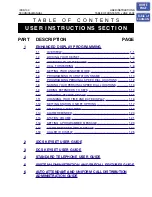
EcoSolar Energy Conscious Design Limited
5
adequately managed to maximise energy savings and to ensure that excess heat is not provided to the
cylinder increasing the risk of overheating.
There are numerous methods of providing backup heating
1.
electric elements in the cylinder
2.
boiler or other heat source heating the water in the cylinder
3.
wetback
4.
an instantaneous water heater with the solar system acting as a preheater
5.
a boosting cylinder with the solar system acting as a preheater
The first two options highlighted above are usually controlled through a time clock or manual
intervention by the customer, these options are commonly used in domestic systems and will not
suffice in the commercial environment where the solar water heating system has to act as a preheater
as highlighted in items 4 and 5 above.
Electric elements or boiler heated cylinder
These are by far the most common methods of providing backup water heating but its use is rarely
optimised. Solar cylinders often have multiple electric elements, one at the bottom to be used for
Legionella control and one in the upper half of the cylinder for boosting the water temperature. The
use of the electric elements, the boiler or other heat source should be minimised and ideally should
only be switched on at the end of the day if the sun was unable to heat the water to the desired
temperature. There are several methods of controlling the backup heating system.
User intervention –
i.e. the customer determines if the water is up to temperature, modern
controllers, such as the one shown above in Figure 3, display the water temperature in the cylinder, if
below a predetermined temperature, the customer manually switches the element or boiler on and
switches it off once the water is up to temperature. Historically. this has been a manual process for
instance using the main element isolator and the problem has been that the customer forgets to turn
the element off thereby leading to increased energy usage. The installation of the EcoSolar “One
shot” controller makes this control method much more user friendly and eliminates the problem of
the electric element being left on. The “One Shot” controller as shown below in Figure 4 allows the
customer to press a button to switch on the backup heating and once the water is up to temperature
the heating is automatically switched off.










































